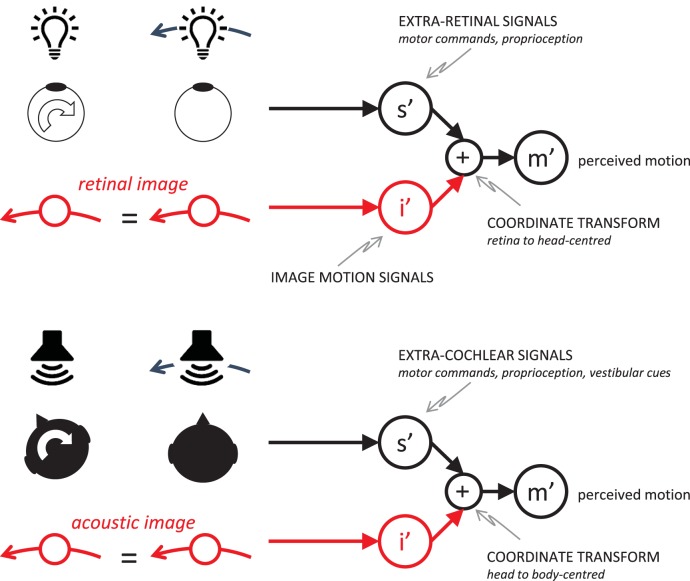Figure 1.
Retinal image motion (top left) and acoustic image motion (bottom left) are both ambiguous—for example, self-movement in front of a static stimulus produces the same image motion as a stimulus that rotates around the perceiver with eye and head still. In vision, this type of problem and its solution are well documented (top right). Here we investigate whether the auditory system takes into account head rotation by using “extracochlear” signals (s′) that encode head movement. Combining these with acoustic image motion signals (i′) effects a coordinate transform, producing an estimate of movement with respect to the body (m′). See the online article for the color version of this figure.

